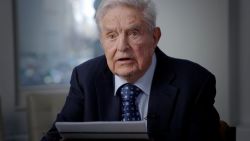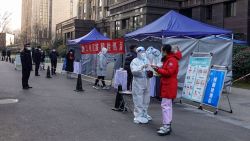Stock markets across the world rose Monday after the United States and China agreed to a temporary truce in their trade war, negotiated over dinner in Argentina on Saturday.
But stark differences in the language used by Washington and Beijing in announcing the deal could spell trouble as both countries begin negotiations aimed at striking a permanent end to trade tensions.
US President Donald Trump and Chinese leader Xi Jinping met for more than two hours on the sidelines of the G20 meeting after months of tough talk on trade and tariffs on hundreds of billions of dollars of goods.
Following the meeting, both sides proclaimed the meeting a success, with Trump pledging to pause the introduction of stricter trade measures ahead of further negotiations.
But the language used in the Trump administration’s announcement of the deal was very different to that in Chinese government statements, especially on Beijing’s promises to buy more US goods and the possibility of removing existing tariffs.
Even the 90-day deadline set by the Trump administration was nowhere to be found in Chinese media coverage.
Bonnie Glaser, director of the CSIS China Power Project in Washington, told CNN the disparity showed there was “a lot of room for misunderstanding” in the deal between Trump and Xi.
“I think that there’s still enormous uncertainty about what the outcome of these negotiations will be,” she said.
90 day deadline?
Before the meeting with Xi, Trump had set a January 1 deadline for increasing tariffs on $200 billion of Chinese goods from 10% to 25%.
Although talks appear to have gone well, it wasn’t clear from the resulting statements whether Beijing realized Trump’s ultimatum wasn’t canceled – only postponed.
According to a readout from the White House, the two leaders agreed “that they will endeavor to have this transaction completed within the next 90 days.”
“If at the end of this period of time, the parties are unable to reach an agreement, the 10% tariffs will be raised to 25%,” the White House statement said.
But in Chinese coverage, there was no mention of a deadline, instead painting the news as a indefinite halt while negotiations continued.
“(Parties) agreed not to impose new additional tariffs,” the Chinese foreign ministry said in a statement.
‘Substantial’ new purchases?
The actual substance of the deal was also very different depending on whose assessment you read.
According to the US statement, part of the deal to halt stricter tariffs was that the Chinese side would make unspecified but “very substantial” purchases of US goods immediately.
“(China will purchase) agricultural, energy, industrial and other products from the United States to reduce the trade imbalance between the two countries,” Washington said. “China has agreed to start purchasing agricultural product from our farmers immediately.”
But again, there was no reference to new purchases in Chinese statements, which only reported that parties wanted to reach a “concrete deal that is mutually beneficial.”
Glaser said this omission was understandable in that “it’s unlikely that Xi Jinping would want to tell his domestic audience that he was making concessions to the US.”
Qualcomm-NXP deal back on?
It was the multibillion-dollar deal that Beijing kept in limbo, before it finally fell apart in July.
American chip maker Qualcomm wanted a merger with Dutch counterpart NXP, an agreement worth $44 billion first announced in October 2016. But before it could go ahead there needed to be regulatory approval in nine jurisdictions including the European Union, South Korea and, critically, China.
Amid growing trade tensions, Beijing allowed the clock to run out and Qualcomm announced the deal was off, paying a $2 billion penalty.
After the meeting between Trump and Xi however, the White House said the deal could be back on.
“President Xi also stated that he is open to approving the previously unapproved Qualcomm-NXP deal should it again be presented to him,” the readout said.
There was no mention of the promise in Chinese state media though. Qualcomm has yet to comment on the news.
No end in sight?
If Chinese statements are anything to go by, Beijing is hoping this will be the beginning of the end for the Trump trade war.
“(Both leaders) instructed the economic teams of both sides to step up negotiations toward the removal of all additional tariffs and reach a concrete deal that is mutually beneficial and win-win,” Xinhua said.
Xi and his team were likely pushing hard for an end to the tariffs that some analysts have said are partly responsible for slowing China’s economic growth and leading international businesses to consider pulling manufacturing out of the country.
“I think the Chinese are hoping that political and economic factors will converge to convince the Trump administration to lower the bar somewhat so that China can meet some of the requirements,” Glaser said.
But whether or not a complete end to tariffs was discussed in Argentina, there was no hint of it in the White House statement.
While he praised the meeting as “highly successful” and a “great honor” to be working with Xi, Trump would only say that tariff increases are on hold for now.
CNN’s Donna Borak contributed to this article.






















